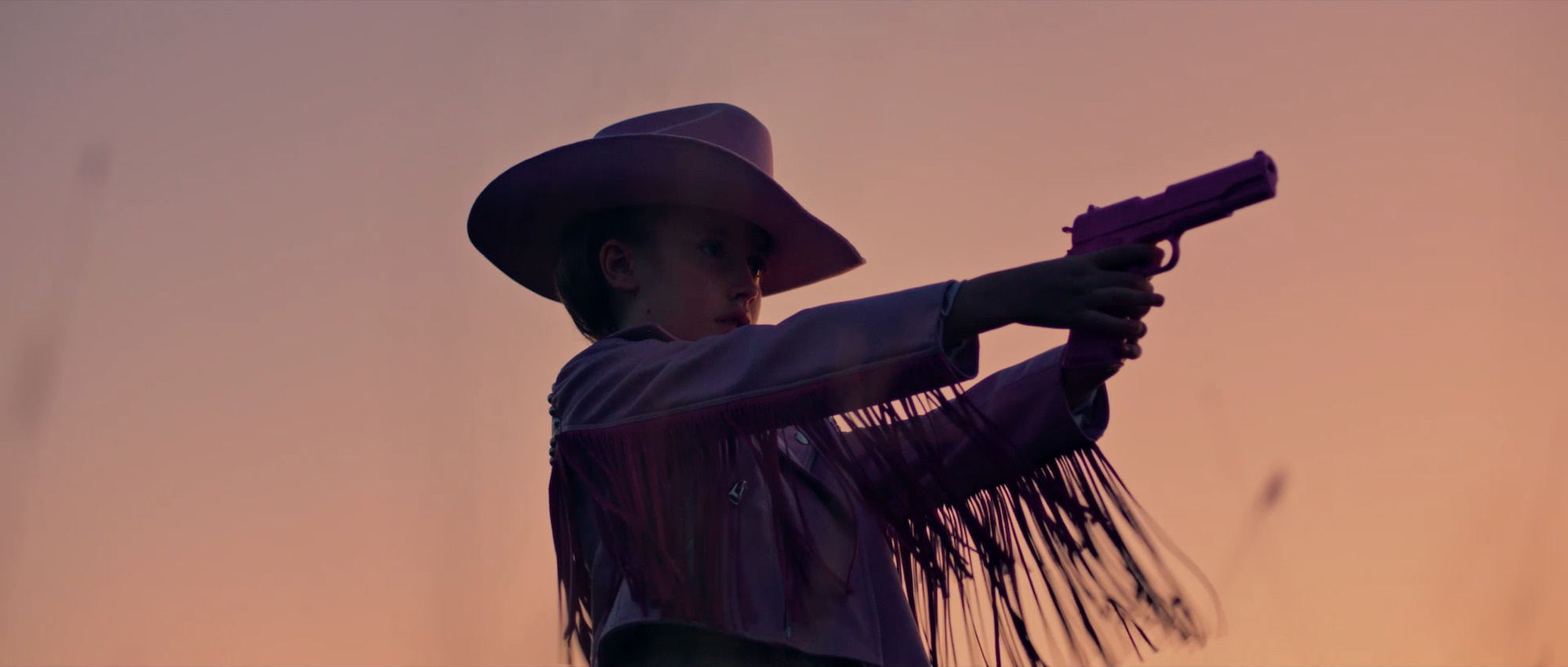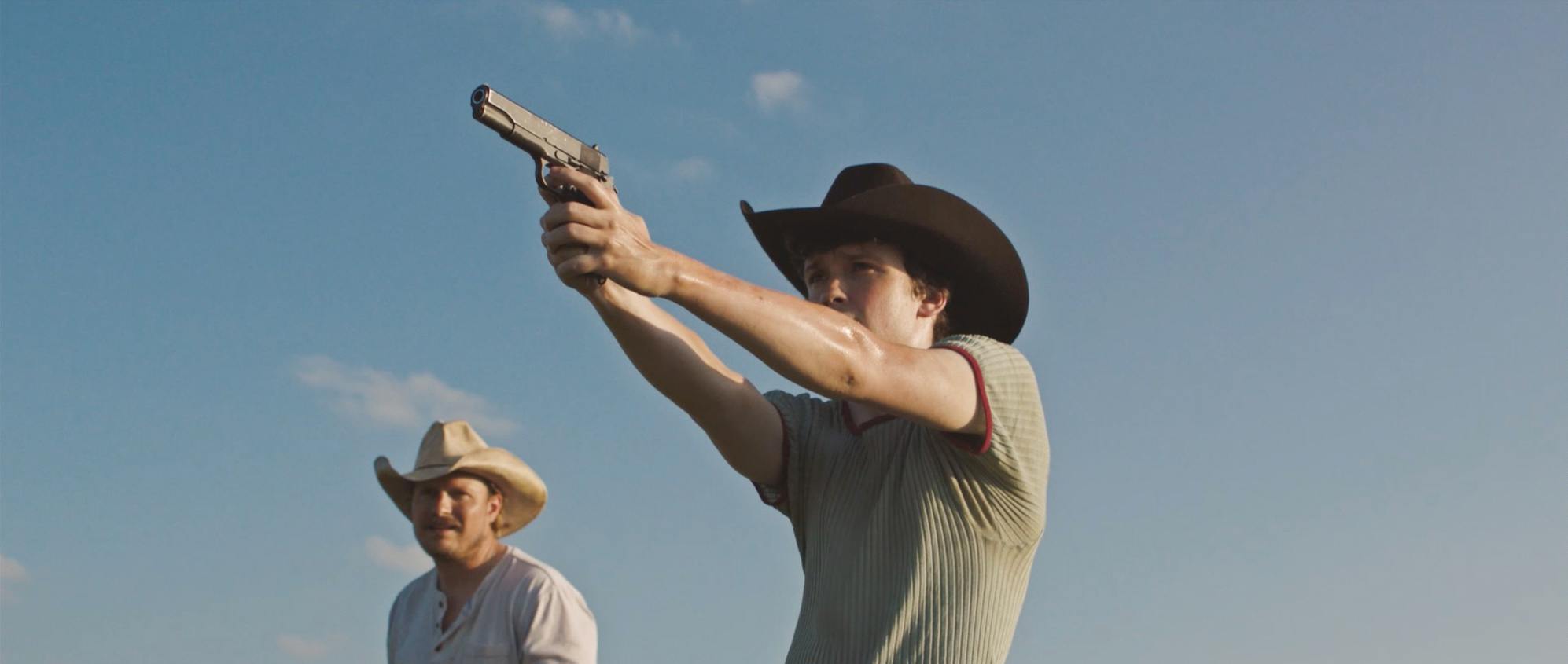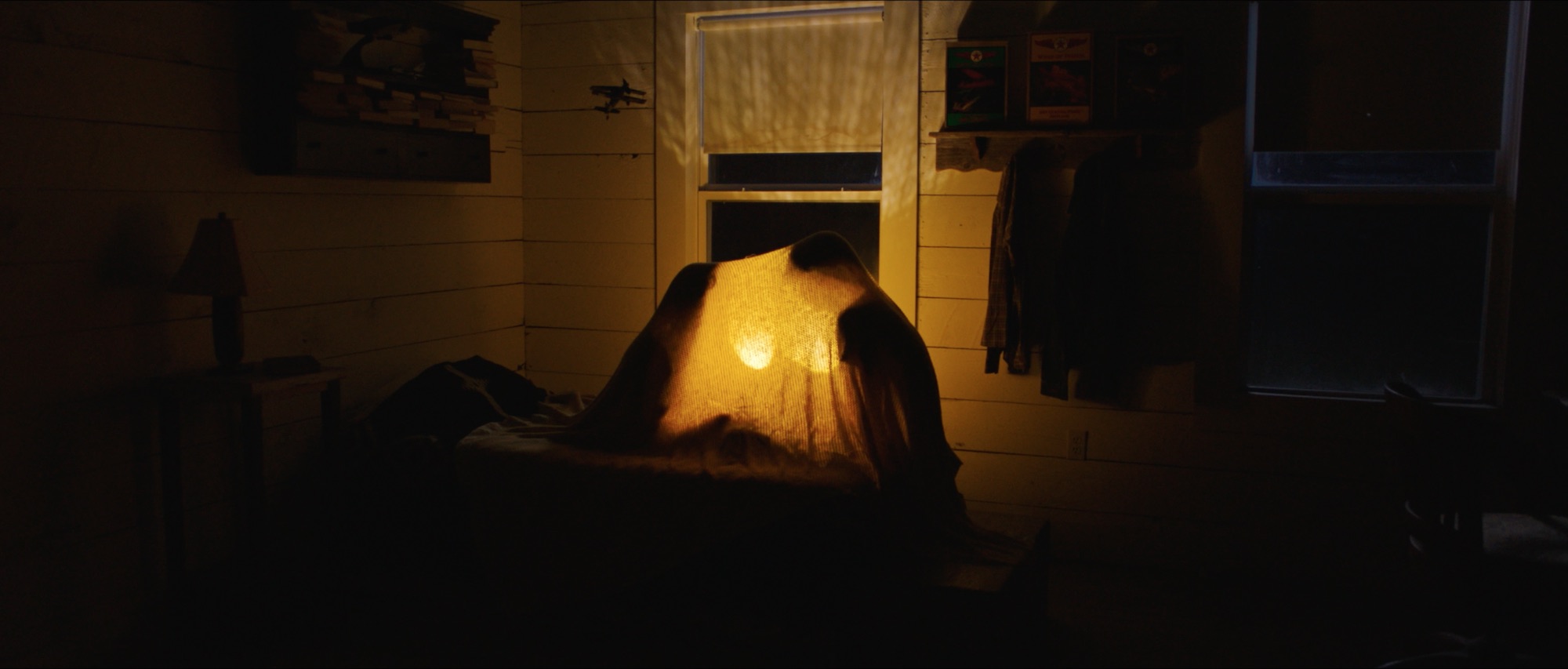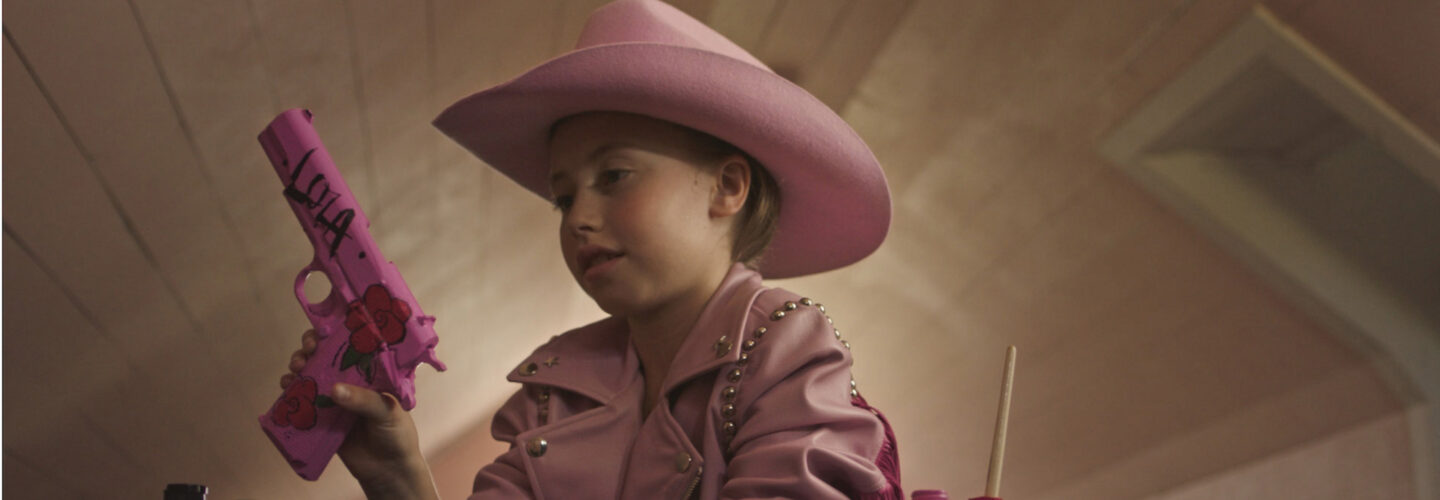
Set in the contemporary American South and dealing with the ever prescient issue of gun violence, Director Emily Elizabeth Thomas elicits a western with a twist in short film Lola: Girl Got a Gun. The film is based on Thomas’ own upbringing in Austin so the notion of children bearing arms isn’t lost upon her. Lola: Girl Got a Gun cleverly subverts the traditional western themes of masculinity in crisis by presenting a young girl with a gun and witnessing how she adapts to it. DN spoke with Thomas about the ins and outs of creating of her short, from constructing her wide, expansive shots to wardrobe choices.
Where did Lola: Girl Got a Gun begin?
Lola: Girl Got a Gun began with a gun. When I was a kid, I dreamt up this little pink gun named Lola in my all-pink bedroom. As a kid growing up in Austin, Texas, I wanted to be a cowgirl. It was my number one pipe dream. This pink gun seemed to represent who I wanted to become and it never really left my consciousness. I started reimagining my Lola gun with my screenwriting background and my ethics as an adult, fusing this childhood fantasy with my storytelling interests as a woman. Which, I would say, is to investigate the human condition in all of its forms. Dark and light. Good and bad. Pain and joy. Find all the cracks and try to mend them.
This unique story began to form and it took over in this frenzied way. It started to become a cautionary tale about abuse and violence, an exploration of Southern identity, and a story of the strength and courage of a young cowgirl. Once a cowgirl always a cowgirl, I guess. A lot of people think Lola is named after its young hero character when really Lola is the name of the gun in the story. All of the characters are nameless – Girl, Boy, Mom, Dad. The story is branded with the name of the gun itself, the center of the conflict but also the object of greatest fantasy. It’s funny how our dreams as children find their way into everything.
Lola elicits both a warning for the danger of armed violence yet doesn’t reject the basic appeal of the weapon, was this something you wanted to convey?
Guns can be seen as representative of power, violence and patriarchy. Three themes that Lola both investigates and attempts to dismantle. The history of guns in the American South is complex. I am a firm supporter of strict gun control laws. I believe guns in the hands of those unprepared to understand their power is one of the greatest dangers in this country. Nobody should have dominion over the life force of another, that’s injustice in action and written into the law.

In the film’s credits, we call out a statistic that was at the root of my mental energy from script to shoot: “Nearly 1,300 children are killed by guns annually in the United States. The NRA has been successful in blocking gun violence research for 20 years and counting.” That is a sweeping statistic, but it was important to me to take a stance on an issue that I see both sides of and has found its way into my art. Texas is an open carry state, which isn’t shocking to Southern people in the way that it might be to folks elsewhere in the country. Gun culture is part of the ground you walk on in Texas. There’s a lawless energy, both in the culture and in those of us who were brought up Southern. It’s what makes us prepared to have these conversations and make change in the culture.
Nobody should have dominion over the life force of another, that’s injustice in action and written into the law.
The weight of placing a prop gun in the hand of an eight year old is not lost on me. I knew how powerful that image would be. But that’s exactly why I did it. There’s certainly an appeal there because this gun that she stole from her father and reimagined as her own is giving her power over her circumstance. But at story’s end that fantasy shatters. This is a girl with a gun, and that is both deeply sad and dangerous. But it’s not the gun that’s most dangerous, I’d argue. It’s the abusive circumstances that put it in her hands in the first place. Violence is always about pain that needs healing, and that’s the real danger to be looked at and investigated, both in issues of gun violence and in issues of protecting children from violence they did nothing to cause. In all of these ways, Lola is both a cautionary tale and an example of how unresolved pain and violence can permeate everything.
Could you talk about working with your younger actors to create their characters?
Girl and Boy were played beautifully by Edie Yvonne and Liam Booth. Edie was eight years old at the time and Liam in his early twenties. In casting both of them, I had an immediate gut reaction to their physical appearances and their energies. Edie has a stunning presence because her energy is very much like that of an adult. She’s self-aware and intuitive and responds to direction beautifully. We talked about her character as a superhero, and actually developed a scale from 1-10 which indicated where the emotions of her character were at in every scene – sometimes sad, sometimes joyful, but always brave. She memorized the scale within minutes. I was so proud of her every step of the way.

With Liam’s character, I had the strongest sense of what this brother figure needed to feel like energy-wise. I grew up with two older brothers who omit a very powerful sense of dutiful protection and unconditional love. I’m so used to receiving that energy, I needed to feel it from this actor. When I met Liam I immediately felt his compassion, empathy, and bravery. He had a strong perspective on his character, and we dug deep together about what it means to protect and defend. He goes toe to toe with Justin Arnold, the actor who plays Dad, and he was ferocious in the way that he committed to that. As an actor, absolutely, but he also seemed to take very seriously the weight of protecting this sister figure’s innocence. It was very moving. Both Edie and Liam are young actors to watch and I can’t wait to see where they go.
I loved that so much of the film is shot from a wide perspective, it means you really get a sense of the environment these children have grown up in, the expansive isolation, what was your process with creating the visuals?
Thank you! From script to shoot the world of Lola was very clear. It was this contemplative, life on the range family drama infused with classic Western cinematic language, muted pastels, pinks, yellows, wide and expansive frames, sweeping Texas skies, and some strange, uncanny magic. These early ideas informed the textures that were in every department. Nadia Gilbert lensed Lola and had an incredible creative perspective. We talked a lot about staying wide, on an easy rig, echoing the emotional instability of the family in camera. There was a lot of classic Western influence as well, especially in the film’s “dream sequence” as we called it, the pink and blue sky sequence where our hero becomes the full iteration of all-pink-super-cowgirl. Nadia put so much care into every shot, everything was very intentional and dripped with the style and ethos that we were trying to infuse into the fabric of the film.

I will always strive to live my life through movies, come hell or high water.
Our production design and wardrobe process was a significant part of creating Lola’s visuals as well. Laura Gordon wore both roles beautifully, fusing wardrobe and set into one seamless paint stroke. We labored for hours over every individual piece of wardrobe, every prop. She had a custom pink leather jacket made with studs and fringe, a custom Stetson. There were so many steady, capable, talented hands sculpting everything you see in frame. I work with very sharp precision, lots of detail. To me, that’s when you’re creating a world, an existence, rather than just an image.
What can we expect from you next?
Lots! It’s an inspiring and exciting time for me. There’s lots of change and rapid movement happening, but I am so ready for all of it. I just wrapped post-production on my second short film Untitled Marfa Project, which is actually Part 2 of an anthology series of short films I’m working on called The Texas Trilogy. Lola: Girl Got a Gun is Part I and Part 3 is finding its way, it’s titled Sweet Georgia, and it’s very different from anything I’ve ever done but I can’t wait to make it.
I’m in the middle of post-production on another special short that I made at the end of 2018 called The Other Woman. So, I’m gearing up for the 2019 festival circuit with two projects – crazy! I’m writing a feature that I’m not entirely ready to talk about yet, but it has extraordinary energy around it. I have so many stories to tell and I continue to live in sincere gratitude for all of the opportunities I have to do what I love. I will always strive to live my life through movies, come hell or high water.


